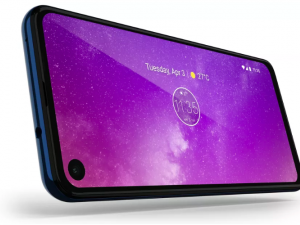5 Ways Apple Can Improve iCloud in 2019
Michael Grothaus 10/01/2019 – 1:08am
5 Ways Apple Can Improve iCloud in 2019 Apple could make iCloud a Dropbox killer. Here’s how!
Apple is lauded for two things: being an incredible hardware company and being a pretty damn good software company. And rightly so. It’s virtually undeniable that Apple produces the best computer hardware on the planet. Its iPhone set the tone for the smartphone market as we know it and its hardware like the MacBook Air launched the world of ultraportables that we see today.
As far as the software, macOS is arguably the best desktop operating system ever and iOS is often hailed as the most secure and stable mobile OS in existence. Apple’s problem—and it is a problem—comes when you discuss services. These services are everything from email to cloud storage that Apple provides under its iCloud brand. In this area, Apple gets stomped by rivals such as Google and Dropbox.
iCloud has come a long way in the last several years. It was first primarily a service for mail, notes, and reminders that gave users the ability to sync the same across various Apple devices. Then Apple added iCloud Photo Library, which keeps a users photo library synced across devices. But most recently iCloud has moved into the traditional cloud storage space dominated by Dropbox. Apple calls its Dropbox competitor iCloud Drive.
Though Apple has been making small iterative improvements to iCloud each year, there’s still a long way to go. Here’s hoping 2019 is the year Apple takes our advice and announces a big overhaul to its iCloud services. Changes like:
Better Storage Pricing Plans
Apple could be all the more competitive with other cloud solutions if they offer slightly better iCloud storage plans. To be clear, Apple already offers more plans and pricing structures than Dropbox does–but they could be better. Right now everyone gets 5GB free storage–but that’s usually taken up by iCloud iOS device backups.

50GB of storage will cost £0.79 a month, 200GB is £2.49 a month, and 2TB is £6.99 a month. Truth be told, those prices aren’t bad. But Apple recently gave all students 200GB of storage available for free. Why not at least move all consumers to 50GB of free storage then?
Then offer 200GB for £0.79 a month, 1TB for £2.49 a month, and kick Dropbox’s ass with 3TB of storage for £6.99 a month.
A Better Web Interface For iCloud Drive
While most cloud storage users use Dropbox’s or iCloud Drive’s file management solutions on their Mac or PC desktop–in other words, navigating their iCloud Drive or Dropbox folder via the Mac’s Finder or Windows’ Explorer–both services allow you to navigate your folders and files through a web browser.
iCloud Drive, accessed via iCloud.com on a web browser, arguably has nicer folder icons, but you can only view those folders and their files as big icons. You can’t view them in List view in your web browser as you can on your desktop.
Admittedly, this is a small cosmetic gripe, but for power users, it’s much easier to navigate cloud storage files when you have multiple choices for the type of views you want.
Offer Apple Maps Online
In recent years Apple has been beefing up its web-based iCloud offerings. They’ve added not just web-based email clients, but also a web-based suite of office software (Pages, Keynote, and Numbers) and a web-based iCloud Drive app. One thing that’s still missing, however, is a web-based Apple Maps.
Maps is available on all iOS and Mac devices via dedicated apps and those apps even sync your trips and save locations between them. But an iCloud user has no way to access their personalized maps on Windows devices. A simple solution here would be to create a web-based Maps app available through iCloud.com.
iCloud Android Support
Props to Apple for not only supporting iCloud Drive natively on the Mac and iOS, but on Windows PC’s as well. The company actually makes a Windows iCloud Drive application that allows iCloud Drive users to natively access their iCloud Drive files on through their PC’s file system.

Unfortunately, that’s where third-party platform support for iCloud Drive ends. Unlike Dropbox, Apple doesn’t bother to make an Android app for iCloud Drive. True, many iCloud Drive users are probably iOS users too, but many could still own Android devices as well–why not make access their iCloud Drive files just as easy on that platform?
And don’t say Apple would never make an Android app–they already do with their Apple Music app for Android.
A More Robust Files App
Finally, and speaking of apps: on iPhone and iPad users access iCloud Drive through the Files app in iOS 12. The app is actually pretty robust, supporting not only iCloud Drive, but other cloud services (hence the “Files” name; it’s not just for iCloud Drive).

But Dropbox’s iOS app still has a better feature set. I’m specifically talking about two things: first, the ability to marking a file for offline support. This means the latest version of that file is always downloaded on all your devices so you can access it even when you don’t have an Internet connection.
Second, the Dropbox app has a nice scanner function. Tap the scan button and the Dropbox app lets you take a picture of a document that then gets scanned into the app as a PDF. It’s an incredibly useful tool for receipts and such–and one the Files app should adopt for iCloud Drive.




